Welcome to RouteScout - a moving collection involving media-centric bits and pieces for Spatial Ground Imagery and Corridor Patrol interests
Friday, November 22, 2013
Sunday, November 10, 2013
Open Back Yards via Google Earth
Forget The Police, Google Earth Is Here
AndroidZoom Blog by Anna Grace Yesterday
The police has found a new ally in terms of surveillance technology: Google Earth.

The story is pretty amazing: in the state of Oregon, the authorities thought it would be a great idea to investigate a suspect using the popular Google App. And it really helped them. They thought a man could be growing more marijuana (for medical purposes, we must say) than it was permitted, and they were absolutely right.
Apparently, the man was bragging all around town about his weed crops being cultivated in his property and once they checked Google Earth, they caught sight of ”satellite images of rows and rows of plants”. They didn’t stop there, though. They went and verified the crofts with an aircraft and, after that, the DEA team arrested the gardener man and dealt with him.
As surprising it might seem, this isn’t the first time and probably not the last that law enforcement agencies use this methods in order to catch illegal activities. However, there’s an important detail that needs to be taken into account: images seen on Google Earth aren’t live so… how can we be sure that they’re not 3 years old, for example?

The story is pretty amazing: in the state of Oregon, the authorities thought it would be a great idea to investigate a suspect using the popular Google App. And it really helped them. They thought a man could be growing more marijuana (for medical purposes, we must say) than it was permitted, and they were absolutely right.
Apparently, the man was bragging all around town about his weed crops being cultivated in his property and once they checked Google Earth, they caught sight of ”satellite images of rows and rows of plants”. They didn’t stop there, though. They went and verified the crofts with an aircraft and, after that, the DEA team arrested the gardener man and dealt with him.
As surprising it might seem, this isn’t the first time and probably not the last that law enforcement agencies use this methods in order to catch illegal activities. However, there’s an important detail that needs to be taken into account: images seen on Google Earth aren’t live so… how can we be sure that they’re not 3 years old, for example?
CrowdFlic - Multiple Views Single Event
CrowdFlik's Auto-Synced, Crowdsourced Footage Lets Anyone Become A Documentary Filmmaker
TechCrunch by Catherine Shu 6:33 am

Have you ever tried to film your favorite song at a concert, only to have someone block your view with their massive head? Or discovered that the only footage of an interesting panel discussion on YouTube was shot by someone with shaky hands? CrowdFlik is a new app that lets you assemble clips shot by different users at the same event, making sure that everyone has video of exactly what they want to see. What makes CrowdFlik unique–and fun to use–is its unique technology, which syncs all uploaded footage to a master clock and geo-location data.
This means you don’t have to hunt down footage from the same event or time-sync it, one of the most tedious parts of video editing. When footage is shot with CrowdFlik, the app automatically slices it into 10-second segments that are synced within 100 nanoseconds using the U.S. Naval Observatory Atomic Clock, allowing you to assemble videos with precise cuts even for fast-moving events like sport matches. All you need to do is open an event in the app, view the collection of clips by other users and drag favorites into your timeline, where CrowdFlik instantly places them in the right order.
CrowdFlik’s iOS app launched last month and an Android version will be released soon. The team plans to push out updates quickly, including one that will allow users to download their edited videos.
Before founding CrowdFlik, CEO Chris Hamer worked in executive marketing positions at companies including Clear Channel and Sony. He came up with the idea for the app after going to a Dave Matthews concert and seeing how many people were filming it on their smartphones.
“Almost everyone films songs at concerts. I just looked at that and thought there must be a way to bring all that great content from different angles together, put it on a platform that is super simple and allow any user to create his or her own edits from synchronized, gathered content,” says Hamer.
He describes CrowdFlik’s ten-second slices of footage as Legos that can be rearranged into videos up to 50 minutes in length. One of the ways the app’s team plans to gain user traction is by promoting CrowdFlik for private events (protected albums are an upcoming feature) such as weddings, children’s sports, conferences and even birdwatching expeditions.
“Our model to get people to use CrowdFlik is to put it in environments where it can solve a problem,” says Hamer. For example, he describes filming a dance troupe in New York City’s Washington Square Park when a bystander wandered into the frame and blocked the shot. Fortunately, Hamer discovered that someone else in the crowd had uploaded clear footage to CrowdFlik, allowing him to assemble a video.
“When the lights go down at the end of an event, that continuity of sponsorship ends,” says Hamer. With CrowdFlik, however, brands can pre-name an event tag in the app (for example, Absolut Presents Dave Matthews At The Hollywood Bowl). Eventually, users will be able to find out more information about a sponsor, performer or venue through events on CrowdFlik, allowing promoters to increase engagement with fans and consumers in a novel but unobstrusive way.
From a user’s perspective, the most intriguing (and fun) thing about CrowdFlik is that it allows any smartphone owner to turn into a documentarian. The challenge of creating videos that fit within Vine‘s six-second time limit unleashed the creativity of users who make videos ranging in tone from comically surreal to sublimely beautiful. Like Vine, CrowdFlik opens up new possibilities.
The app’s ease of use makes it attractive to people of many ages and levels of tech literacy. It can also draw in users who might not be particularly interested in shooting mobile videos, but discover that they love playing with other people’s footage. Hamer says CrowdFlik will eventually enable multiple replays in the same video, allowing you to create vignettes that tell the story of the same event from different perspectives (imagine creating a video of your kid’s soccer match that uses the same non-linear narrative technique as “Pulp Fiction” or “Inception”).
“The whole [mobile video] ecosystem is growing in leaps and bounds,” says Hamer. “CrowdFlik brings a multidimensional view and ability sync multiple cameras. There are infinite possibilities.”
The app’s early investors include James Huaslein, the former CEO of Sunglass Hut, CEO 13 Mobile founder Stephen Maloney, Source MarketingCEO Derek Correia, Source Marketing managing directors Mark Toner and Richard Feldman and social media expert Sarah McClutchy.
Seeing without being Seen - Disconnect
Disconnect Search, Built By Ex-Google And Ex-NSA Engineers, Lets You Use Google, Bing And Yahoo Without Tracking
TechCrunch by Ingrid Lunden

Started as a side project by then-Googler Brian Kennish back in 2010 to cut out ad tracking during a person’s Facebook browsing session, Disconnect has gone on to raise funding (twice), expand to work on multiple browsers and sites, and create apps for specific users (eg, kids), and take on more engineers, including two more from Google and one from the NSA. With its apps now used by 1 million people every week, Disconnect is now tackling the most popular way that people discover content online today: search engines. Today, the company is launching Disconnect Search, an extension for Chrome and Firefox browsers that lets users searching on Google, Bing and Yahoo, as well as Blekko and DuckDuckGo, to remain private while doing so.
The extension works both on the search portals’ main sites, as well as through a browser’s omnibox (in the case of Firefox) or browser bar (in the case of Chrome). (The “search from everywhere” feature is still in beta.) Disconnect says that it has applied for patents to protect the proprietary way in which it does this.
Casey Oppenheim, the former consumer rights attorney who is the co-founder of Disconnect with Kennish, points out that search engines, partly by virtue of being a portal to everything else, are often some of the most invasive when it comes to a user’s privacy. “Your searches are anything but private,” he noted in a statement. “Search engines, and even websites and Internet service providers, can save your searches and connect them to your real name through your user accounts.” Indeed, if you’ve been logged into your Gmail or another Google service and then visited Google.com, you’ll know exactly how this works.
Somewhat more alarmingly, this happens even when you’re not logged in to another service, notes Patrick Jackson, the ex-NSA engineer who is now CTO of Disconnect (he also was behind the neat kids app Disconnect launched in August). “Even if you never log into an account, search engines and many websites typically save your searches and connect them to an IP address, which can allow companies to uniquely identify your computer.” A technique, I guess, an NSA engineer would be all too familiar with.
Disconnect Search works along four channels, the company says, with some of the method taking a hat-tip from VPN tunnelling services that mask your IP address:
– Search queries are routed through Disconnect’s servers, “which makes the queries look like they’re coming from Disconnect instead of a specific user’s computer,” the company says.
– As a result, search engines are prevented (blocked) from passing keywords to the sites that are visited from search results pages.
– All queries are encrypted, which prevents ISPs from seeing them.
– And on top of this, Disconnect doesn’t log any keywords, personal information, or IP addresses after it routes your query to its own servers.
The results do not come through in any noticeably different way to users. They remain “native” to the search engine in question, just as users can engage on the sites in the same way that they already do. The two searches I did when testing out the product, one using the Disconnect Search filter and one not, product, more or less produced a similar set of results. There is a very slight delay in delivering those results via Disconnect Search.
As with Disconnect’s other products, the idea longer term will be to build out specific paid services that offer users additional features; and I wouldn’t be surprised if we see the company also move into specific solutions that might work with organizations that have their users sit behind firewalls that today may prevent those users from accessing the full Internet for reasons for security and privacy protection (this is, for example, the case with some networks in government organizations).
But for now, Disconnect Search, as an unpaid service. remains a strong example of why it’s not always the case that if you are taking a free service, youby default become the product.
Panasonic SLR 4K or Bust?
Detailed Panasonic GH4 rumoured specs – 10bit 4:2:2 and 4K video
EOSHD.com by Andrew Reid Oct 23

Compelling Panasonic GH4 rumours have come in from two good sources. Disclaimer: I’m not a rumours site but if I was I’d give this a high rating. That said, it’s still a rumour! Nothing official has been announced by Panasonic.
The model has a pro-range product code. It will be dubbed the Panasonic AG-GH4.
Rumoured pricing is around $2999 body only. It’s a lot cheaper than the Panasonic AF100 was at launch. This will be a fully video orientated camera. No mention of stills capability was made by our sources.
This will really take the fight to Cinema EOS.
Specifications -
4K/24/25/30fps
16mp sensor with full pixel readout
10bit 4:2:2 codec (likely AVC Ultra)
200Mbit MP4 ALL-I and 100Mbit IPB options
Adapter that sits on the camera has 4x 3G-HD-SDI and 2x XLR
Up to 30fps in 4K mode
OLED monitor, 1 million dot
21mm OLED viewfinder, 3 million dot
Form factor similar to the GH3 but slightly larger, all output jacks facing out of the left side
Time code
I love what Panasonic, it seems, may be doing here.
The GH4 isn’t a replacement for the GH3, but I know a lot of GH3 owners who would jump on this camera; myself included. The GH3 consumer compact system camera will likely progress with the GH5 in the same way Panasonic’s numbering of consumer cameras usually skips the ’4′, like GF3-GF5 and LX3-LX5. The AG-GH4 will be for 4K video.
As always with rumours there’s a chance this might not happen. Panasonic have not officially announced anything yet.
It’s great to see the 10bit codec and there’s more to the camera than 4K. A full pixel readout captures more of the available dynamic range and colour information from the sensor, not just more resolution. I suspect the video is downsampled slightly to 4K from the full 16MP on the image processor side, which is a huge improvement on the current sensor binning techniques used to drastically chop 16MP down to 1080p.
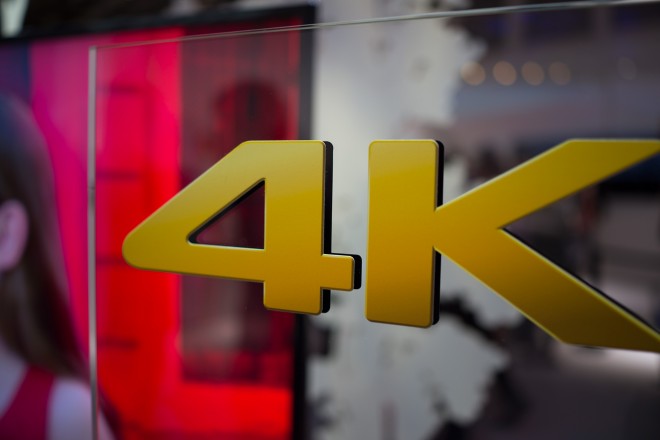
The XLR / HD-SDI add-on box is also a very smart move by Panasonic. This will give videographers a way out of the dreadful 2.5m audio jack and wobbly mini HDMI ports that plague other cameras of this form factor.
According to the rumour, price is extremely accessible to consumers as well as pros, which gives the camera a broad appeal, though initial shipping quantities will be more limited than the GH3.
We do know the camera is capable of stills but beyond that, only the 1/8000 shutter speed and 16MP sensor were mentioned.
Footnote: if you’re curious – 43rumours also had the same news from the same sources
The post Detailed Panasonic GH4 rumoured specs – 10bit 4:2:2 and 4K video appeared first on EOSHD.com.
Imagery or Full Motion Video - Cross over is the norm
Open letter to Japanese manufacturers on the enthusiast video market – improve or lose it
EOSHD.com by Andrew Reid 4:45 pm
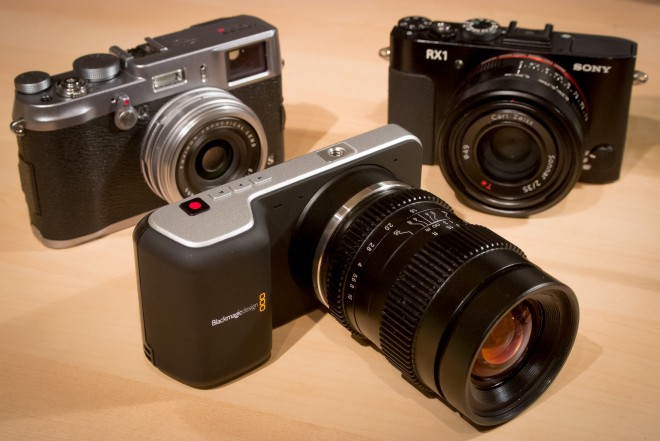
The Blackmagic Pocket Cinema camera is a wake-up call to the bigger manufacturers and their afterthought video modes.
A very traditional photography philosophy pervades the Japanese offices of Canon, Nikon, Sony, Fuji and Olympus. For only really Panasonic have made any attempt to take cinematic video to the masses.
Canon have been by far the luckiest of the major manufacturers when it comes to video and the filmmaking community. The 5D Mark II paved the way for increased sales of Rebels and the 7D to video enthusiasts the world over. They never intended for that to happen.
Several high profile filmmakers helped further cement Canon’s position at the top of the food chain at the same time Panasonic was offering more features and a sharper image on the GH1 and GH2.
Then with the 5D Mark III, just as the dying embers of the Canon DSLR video era were burning out and users were changing to other cameras like the GH3 and Sony FS100, Magic Lantern develop raw video. Canon really have had luck on their side big time.
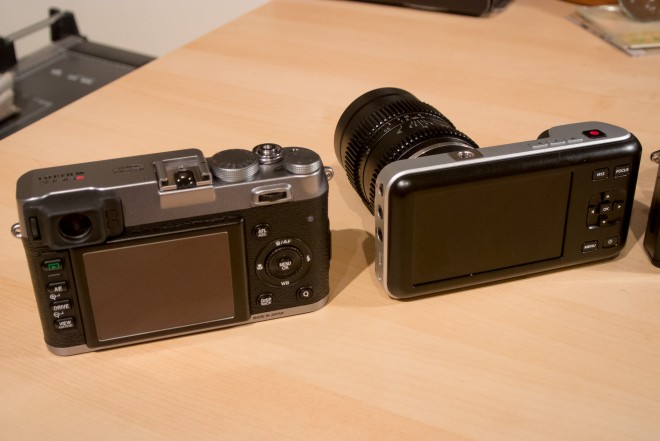
It’s a lack of attention and focus which also hurts stills photographers using the live-view display.
On the X100S for example, an other superb stills camera, the EVF and LCD become virtually unusable under certain types of lighting as the sensor is only enabled for NTSC frame rates no matter what region it’s sold in.
On the RX1 video quality is like a broken VHS cassette despite Sony putting the same sensor into a dedicated video camera.
That lack of attention on video during the sensor design stages screwed the Sony VG900 on the market and it has seen massive discounting down from 3000 euros to 1000 euros in just 12 months.
I firmly believe the manufacturers are their own worse enemy.
Then comes the Blackmagic Cinema Camera, which proves the manufacturers CAN do what we’re asking of them.
The Canon 1D C 4K cinema DSLR costs $15,000 and yet doesn’t shoot ProRes. This does.
It has peaking for manual focus, something stills cameras have only just begun implementing, though not the 1D C! The colour space and sampling for video on the Blackmagic Pocket Cinema Camera is 10bit 4-2-2 and even though the sensor is a small Super 16mm chip it’s actually perfectly usable at ISO 1600 in low light. There’s none of the mushy compression AVCHD gives us or any of the electronic looking colour of 8bit codecs, all this for under $1000.
On the RX1 video quality is like a broken VHS cassette despite Sony putting the same sensor into a dedicated video camera.
That lack of attention on video during the sensor design stages screwed the Sony VG900 on the market and it has seen massive discounting down from 3000 euros to 1000 euros in just 12 months.
I firmly believe the manufacturers are their own worse enemy.
Then comes the Blackmagic Cinema Camera, which proves the manufacturers CAN do what we’re asking of them.
The Canon 1D C 4K cinema DSLR costs $15,000 and yet doesn’t shoot ProRes. This does.
It has peaking for manual focus, something stills cameras have only just begun implementing, though not the 1D C! The colour space and sampling for video on the Blackmagic Pocket Cinema Camera is 10bit 4-2-2 and even though the sensor is a small Super 16mm chip it’s actually perfectly usable at ISO 1600 in low light. There’s none of the mushy compression AVCHD gives us or any of the electronic looking colour of 8bit codecs, all this for under $1000.
With all the technology and resources at their disposal, I am amazed none of the big corporations in Japan can properly cater for the enthusiast and prosumer video market.
Embracing the niche
All new markets start as a niche.
You also have markets trickling down from the very top of the filmmaking industry and becoming more widely known. A perfect example of this is that of the anamorphic lens.
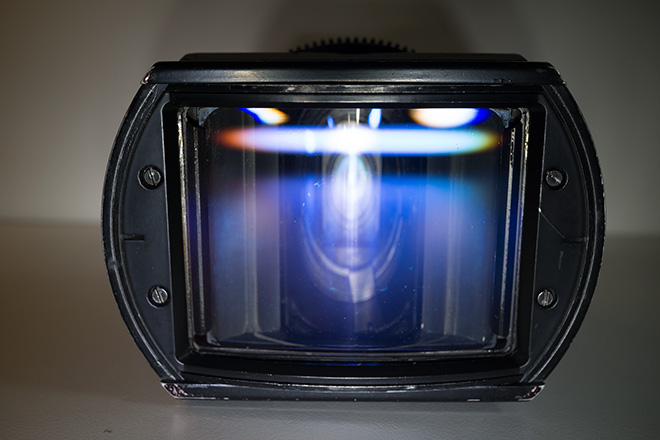
At play here is a cultural element that is very hard to see in the sales stats.
Director J.J Abrams has been using anamorphic lenses and flare in a range of massive cultural hits in the West.
As a result the anamorphic look has become more mainstream and more sought after (even creating price bubble for lenses as there are so few of them).
Nobody at Canon or Sony take any notice of things like this because they are focussed so intently on where the next billion dollars of growth is coming from.
The enthusiast video market is not as big as the prosumer stills camera market so Canon neglect us.
They prefer to concentrate on high added value products like the Cinema EOS range.The problem with this is that you become stuck with the status-quo and exposed when the momentum changes.This happened to Nokia when Apple came along out of the blue with the iPhone.
Today Blackmagic are too small and shipping in too low a quantity to be Apple and truly hurt Canon with disruptive technology, but there are signs of it happening elsewhere. Smartphones have killed the compact camera while Samsung have disrupted Sony and Panasonic’s TV businesses in a major way, simply by giving consumers a better image for much less money.
In the end that simple business principal will come to the enthusiast video market and the big manufacturers will completely lose their grip on it.
The post Open letter to Japanese manufacturers on the enthusiast video market – improve or lose it appeared first on EOSHD.com.

At play here is a cultural element that is very hard to see in the sales stats.
Director J.J Abrams has been using anamorphic lenses and flare in a range of massive cultural hits in the West.
As a result the anamorphic look has become more mainstream and more sought after (even creating price bubble for lenses as there are so few of them).
Nobody at Canon or Sony take any notice of things like this because they are focussed so intently on where the next billion dollars of growth is coming from.
The enthusiast video market is not as big as the prosumer stills camera market so Canon neglect us.
They prefer to concentrate on high added value products like the Cinema EOS range.The problem with this is that you become stuck with the status-quo and exposed when the momentum changes.This happened to Nokia when Apple came along out of the blue with the iPhone.
Today Blackmagic are too small and shipping in too low a quantity to be Apple and truly hurt Canon with disruptive technology, but there are signs of it happening elsewhere. Smartphones have killed the compact camera while Samsung have disrupted Sony and Panasonic’s TV businesses in a major way, simply by giving consumers a better image for much less money.
In the end that simple business principal will come to the enthusiast video market and the big manufacturers will completely lose their grip on it.
The post Open letter to Japanese manufacturers on the enthusiast video market – improve or lose it appeared first on EOSHD.com.
Citizen Sensor - A recorded life
Autographer wearable camera launches tomorrow priced at £400, we go hands-off
Engadget by Mat Smith 4:00 am
It's been a long time coming -- close to a year, but OMG Life's clippable, er, lanyard-able life-logging camera will be available to buy tomorrow. TheAutographer launches in the UK (where the company's based) and most major European countries on July 30th, priced at a rather prohibitive £400 (we're still confirming a US dollar price, but a later launch has been promised) and pitching itself as "the world's first intelligent wearable camera." We'd position it as an addition to your smartphone and/or standalone camera -- like Lytro or the incoming Memoto -- for those that have the cash.
There's a curious appeal to it, helped by an attractive design that's predominantly plastic. We spent over three days wondering around, sometimes with it on a leather lanyard (included) around our neck, sometimes clipped to our belt or shirt pocket. For better or worse, it's a truly hands-off camera: there's really no way to frame or even time your captures. The Autographer itself chooses when to take a shot using its five sensors (monitoring changes in color, temperature, magnetometer, motion and acceleration), which means there's a hefty dose of luck involved in how your photos turn out. See whether Lady Luck was shining down on us (the sun certainly wasn't) and check out our sample images below and first impressions after the break.
Smart Tracking... Spot Beacon
Spot Gen3 outdoor beacon adds more robust tracking options, improved battery life
Engadget by Darren Murph 9:29 am

It looks nearly the same as it did in 2007, but Spot's outdoor beacon has evolved quite nicely on the inside. Now in its third incarnation, the Spot Gen3 is designed to help wandering argonauts keep their loved ones informed of their location for an even longer period of time. Engineered to be worn by those intentionally heading off of the conventional grid, the Spot Gen3 adds unlimited tracking (enabling wearers to pre-set the device to send tracks every 5, 10, 30 or 60 minutes), motion activated tracking and longer battery life. According to the company, this guy will last nearly twice as long as prior versions, and you can also power it via battery or USB. The downside, of course, is that you'll need to pay $149.95 for the unit itself, along with a required annual subscription plan that starts at $149.99 per year. No one ever said adventuring was a poor man's sport, eh?Filed under: GPS
Saturday, November 9, 2013
Bing Map Goes 3D via EXCEL 365..
Excel's Power Maps take bar graphs to some new and mildly interesting places
Engadget by Mariella Moon 2:51 am
There are only so many ways one can juice up boring Excel data, but Microsoft's new Power Map Preview for Office 365 looks like it's up to the challenge. The 3D map visualizer has just graduated from "project" status with a handful of features sure to please number crunchers and map lovers alike. Power Map can automatically recognize geographical data in your spreadsheets -- from latitude and longitude coordinates to city or country names -- and plot associated values to points on a Bing map. You can also color code locales to see regional trends, switch between globe and flat map views and create "interactive" video tours for traversing your 3D spreadsheets. Those determined to turn raw numbers into eye candy will find the add-in on Microsoft's Download Center, and for an idea of what it can do, a sample video tour Redmond made earlier is located after the jump.
3D for Rookies
SIG3D Stereoscopic 3D Classroom Basics Webinar
3D Vision Blog by Bloody

Here is something that might be of interest for people that are considering using stereoscopic 3D as a tool in the classroom in order to be able to better keep the attention of the students, right in time for the beginning of the school year. The SIG3D Stereoscopic 3D Classroom Basics webinar took place a few days ago and a recording is now available online if you’ve missed the live one, so you can take a look and later today there will be a Q&A session. The presentation was held by Dennis Cafiero who is also the creator of Presente3D (a tool for making stereoscopic 3D presentations) and in it he makes a brief introduction on how 3D works as well as covering various 3D technologies for the classroom including anaglyph 3D, active and passive 3D stereoscopic solutions as well as glasses-free options (autostereoscopic 3D) with their pros and cons. SIG3D is an ISTE Special Interest Group for educators and innovators interested in stereoscopic 3D and is a part of the International Society for Technology in Education (ISTE).
Want more ... http://www.cyclopital3d.com/
Floating on a Cloud...
Bessemer Venture Partners Launches $100 Billion Cloud Index
All Things Digital by Arik Hesseldahl

Image copyright Maksym Darakchi
Still doubtful about the whole cloud computing thing? Here’s a new metric that should probably change your mind. The combined market capitalization of the Top 30 cloud computing companies is now north of $100 billion.
Who says so? Bessemer Venture Partners, that’s who. The venture capital firm known for backing cloud companies like Box and Eloqua has tallied up the valuations of 30 different cloud and software-as-a-service companies that have gone public. And here’s another interesting metric that should get your attention: If they were traded as an index, their shares are up by 168 percent since the start of 2012, beating both the Nasdaq and the Standard & Poor’s 500.
The numbers, Deeter argues, slam the door shut on the argument still made by some software companies that running software in the cloud is a fad. “With 30 large public companies collectively representing more than $100 billion in market capitalization and $12.5 billion in estimated 2013 revenue, the cloud computing industry has officially come of age,” he writes.
So, who’s on the list? Well-known cloud companies like Salesforce.com, LinkedIn, Workday and NetSuite form the index’s backbone, with a combined $67.4 billion, but it also includes other more recent entries, likeMarketo and Rally Software, both of which bowed in IPOs earlier this year.
There’s also a few you may not have heard of, or which you might not consider to be cloud software companies at first glance. One is AthenaHealth, a company that sells a cloud-based service aimed at managing medical records and running doctors’ offices. Another is LifeLock, the company that helps consumers protect their personal information from misuse.
Deeter says the plan is for BVP to update the index weekly.
How did it select the companies? BVP takes a pretty hard line. Those companies with the classic multi-tenant, subscription-based business model like Salesforce, Workday and Cornerstone OnDemand made it. Others with hybrid approaches, like Jive Software, which offers both a cloud and an on-premise version of its software, made it, too. A few didn’t make it: “Despite benefiting from some of the tailwinds of the cloud industry and enjoying tremendous success in their own markets, we did reluctantly exclude the likes of Splunk, Tableau and Qlik, because they are neither multi-tenant technologies, nor subscription-based models.” It also leaves out large software companies like Oracle and SAP that have lately been buying up cloud companies and converting their existing products to cloud offerings.
Here’s a screen grab of the index’s components companies:

Image copyright Maksym Darakchi
Still doubtful about the whole cloud computing thing? Here’s a new metric that should probably change your mind. The combined market capitalization of the Top 30 cloud computing companies is now north of $100 billion.
Who says so? Bessemer Venture Partners, that’s who. The venture capital firm known for backing cloud companies like Box and Eloqua has tallied up the valuations of 30 different cloud and software-as-a-service companies that have gone public. And here’s another interesting metric that should get your attention: If they were traded as an index, their shares are up by 168 percent since the start of 2012, beating both the Nasdaq and the Standard & Poor’s 500.
The numbers, Deeter argues, slam the door shut on the argument still made by some software companies that running software in the cloud is a fad. “With 30 large public companies collectively representing more than $100 billion in market capitalization and $12.5 billion in estimated 2013 revenue, the cloud computing industry has officially come of age,” he writes.
So, who’s on the list? Well-known cloud companies like Salesforce.com, LinkedIn, Workday and NetSuite form the index’s backbone, with a combined $67.4 billion, but it also includes other more recent entries, likeMarketo and Rally Software, both of which bowed in IPOs earlier this year.
There’s also a few you may not have heard of, or which you might not consider to be cloud software companies at first glance. One is AthenaHealth, a company that sells a cloud-based service aimed at managing medical records and running doctors’ offices. Another is LifeLock, the company that helps consumers protect their personal information from misuse.
Deeter says the plan is for BVP to update the index weekly.
How did it select the companies? BVP takes a pretty hard line. Those companies with the classic multi-tenant, subscription-based business model like Salesforce, Workday and Cornerstone OnDemand made it. Others with hybrid approaches, like Jive Software, which offers both a cloud and an on-premise version of its software, made it, too. A few didn’t make it: “Despite benefiting from some of the tailwinds of the cloud industry and enjoying tremendous success in their own markets, we did reluctantly exclude the likes of Splunk, Tableau and Qlik, because they are neither multi-tenant technologies, nor subscription-based models.” It also leaves out large software companies like Oracle and SAP that have lately been buying up cloud companies and converting their existing products to cloud offerings.
Here’s a screen grab of the index’s components companies:
Thursday, November 7, 2013
SONY
Surprise! New Sony RX10 sensor has 5K full pixel readout
EOSHD.com by Andrew Reid 9:30 am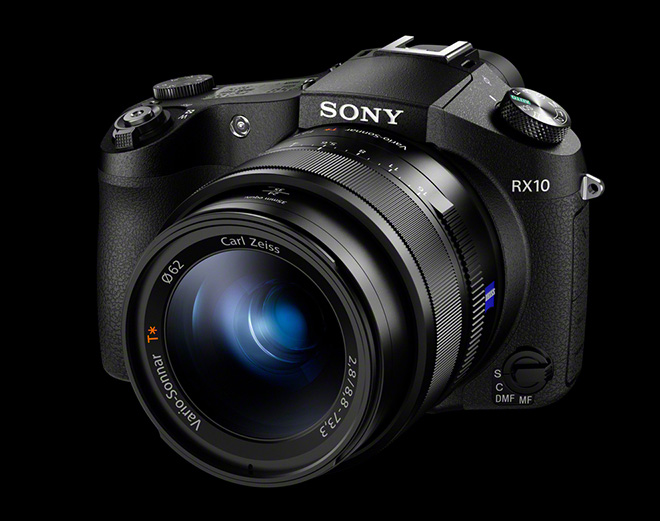
According to Imaging Resource the new video mode of the new Sony RX10 with 1″ sensor is a huge step forwards. The RX10′s sensor reads out the entire 5472 x 3080 frame at 60fps sending huge amounts of raw video data to the image processor.
The new Bionz X processor is designed to take the 5K video stream (for the first time). The advantage is that Bionz X can intelligently downsample and compress to 1080p from a much higher baseline than usual.
The RX10 is a $1300 fixed lens 24-200mm F2.8 (constant) bridge camera with ND filter and a sensor that sits between Micro Four Thirds and Super 16mm in terms of size. An XLR audio adapter is available.
It isn’t tiny by any means at 2.7x crop over full frame. Super 35mm is a 1.5x crop over full frame.
Until now DSLRs had to downsample and throw away tons of data on the sensor even before the output reached the image processor, resulting in moire and aliasing.
Promisingly the new Bionz X is also in the Alpha A7 and A7R full frame cameras.
With the processing power increase in Bionz X clearly Sony are paving the way for 4K in their high end system cameras and compacts.
There’s no indication whether the very promising A7 and A7R have CMOS sensors with this kind of mega-bandwidth readout though.
Full pixel readout has been restricted to smaller sensors to date, with the Nikon 1 sensor from Aptina and the Galaxy Note III sensor both capable of 4K output at up to 60fps.
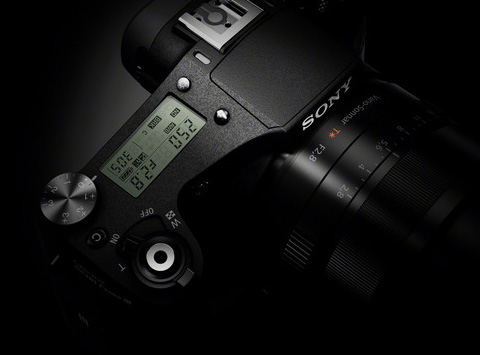
Here’s what Dave Etchels at Imaging Resource had to say about video on the RX10 -
Where the Sony RX10 really breaks new ground for video, though, is that it’s the first camera we’re aware of that reads out the entire sensor pixel array for every frame, performing sub-sampling/video anti-aliasing in the processor. This potentially addresses the huge bugaboo of still-camera video recording, namely the tendency towards moiré and false-color artifacts, thanks to the mismatch between still-image and video resolution.
Pretty much every digital still camera we’ve tested produces very noticeable moiré patterns and color artifacts in its video. (The Canon 5D Mark III deserves note as doing better than most, but even it still shows some level of video artifacts.)
The issue is that a still camera has to get rid of a lot of its image data in order to output a 1,920 x 1,080 video image. They usually don’t have enough processor horsepower to do a proper job of sub-sampling the image in the vertical direction (across scan lines), so resort to simply skipping rows of pixels, jumping 2, 3, or 4 rows for each one actually output. The problem with this is that the image data is way undersampled from an image-processing standpoint, so moiré and artifacts are pretty much guaranteed. It’s not that the industry doesn’t know what to do to prevent the problem, it’s just that there isn’t enough processing horsepower available to do what the job requires. Until now.
Besides its advantages for still image processing, the new BIONZ X processor in the Sony RX10 has a special LSI front-end processing section ideally suited to processing huge amounts of video data on the fly. For the first time (that we’re aware of), the RX10′s processor clocks the entire 20-megapixel image off the array up to 60 times/second, and then sub-samples (think of it as a special class of signal averaging) the raw image data digitally, to produce the final 1,920 x 1,080 video image. Doing so effectively performs a low-pass filtering operation on the video data, thus greatly reducing the propensity for moiré and false color artifacts.
While our sample camera was only a prototype, we did take it outside and challenge it with some subjects that typically produce bad moiré or false-color patterns with cameras we test. The results were very encouraging. It didn’t completely eliminate moiré patterns, but they were greatly reduced relative to just about every other camera we’ve seen, and there were no false-color artifacts to be seen anywhere. Not only that, but the video itself was very clean and crisp-looking, so the reduction in false color and moiré didn’t seem to come at the expense of mushy subject detail.
We have mobile phones (Samsung Galaxy Note III) now which can do a similar thing on hardware costing no more than $500 at retail, much less to manufacture.
Why have Sony, with their huge 4K marketing push, not yet utilised their sensor to its full extent?
Sticking to 1080p and AVCHD is disappointing but there’s a technical challenge to overcome with 4K on DSLRs.
Time for H.265
Canon’s 1D C had to use the dated MJPEG codec to write 4K video to Compact Flash cards. Currently the H.264 standard requires a LOT more processing power and compression to do 4K. It is possible Sony are waiting for the more efficient H.265 standard to be ratified before offering consumer 4K video. This would allow higher image quality on SD cards for 4K.
On the Galaxy Note III the compression is so high to get the phone to write 4K video to the media, almost all the detail above 2K is smudged away.
Clearly sensor technology is ahead of the game and Sony have now made a nice step with Bionz X on the video processing side, which will hopefully benefit the A7 and A7R… But 4K will have to wait until the compression and card media side improve further. One solution in the interim would be to offer a SSD recorder in the form of a battery grip which will act as a direct tap on the 5K sensor feed in the RX10 and write this in ProRes format to the faster media – but this takes the camera beyond the comfort zone of most consumers and pushes up against Sony’s high margin pro-video line.
So far the RX10 looks to be a very handy step up on a standard DSLR for video, if you don’t mind the fixed lens mount and smaller sensor.
Wednesday, November 6, 2013
Do not use these Passwords...
The 20 Most Popular Passwords Stolen From Adobe
AndroidZoom Blog by Anna Grace 6:22 am
It’s 2013 and people still use password as a password. Really.
Last month, Adobe had a big data breach which affected 38 million users, whose personal details were stolen. Jeremi Gosney, well-known password cracker and researcher from Stricture Consulting Group was able to download the file and publish the list of the most popular passwords used by Adobe users.

Adobe it’s not the first and won’t be the last company to get hacked, but that doesn’t stop people from using dumb passwords over and over again. You would think that people nowadays are more creative and worry about security breaches but the names on those list clearly prove us wrong.
The first two passwords on the list are the highly original 123456 and 123456789. How much time did those take? The third one is my particular favorite: password. And then it comes the number variations (12345678, 111111, 1234567, 123123, etc) and some other topic-related ones like adobe123, photoshop and adobe1. Let’s not forget the most romantic one of all: iloveyou.
Even though Adobe hasn’t confirmed that this list is accurate, it does seem like it could be true. After all, we’re the ones who always complain when we’re asked to create a password using at least one number and one capital letter. What about Abc123?
Via | Mashable
Last month, Adobe had a big data breach which affected 38 million users, whose personal details were stolen. Jeremi Gosney, well-known password cracker and researcher from Stricture Consulting Group was able to download the file and publish the list of the most popular passwords used by Adobe users.

Adobe it’s not the first and won’t be the last company to get hacked, but that doesn’t stop people from using dumb passwords over and over again. You would think that people nowadays are more creative and worry about security breaches but the names on those list clearly prove us wrong.
The first two passwords on the list are the highly original 123456 and 123456789. How much time did those take? The third one is my particular favorite: password. And then it comes the number variations (12345678, 111111, 1234567, 123123, etc) and some other topic-related ones like adobe123, photoshop and adobe1. Let’s not forget the most romantic one of all: iloveyou.
The Top 20
- 123456
- 123456789
- password
- adobe123
- 12345678
- qwerty
- 1234567
- 111111
- photoshop
- 123123
- 1234567890
- 000000
- abc123
- 1234
- adobe1
- macromedia
- azerty
- iloveyou
- aaaaaa
- 654321
Even though Adobe hasn’t confirmed that this list is accurate, it does seem like it could be true. After all, we’re the ones who always complain when we’re asked to create a password using at least one number and one capital letter. What about Abc123?
Via | Mashable
Labels:
Mobile security,
Secure Android,
smartphone security
Tuesday, November 5, 2013
Subscribe to:
Posts (Atom)



